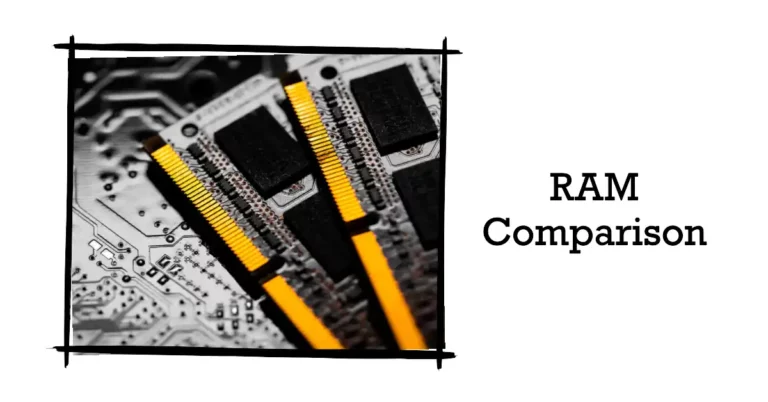Is 16GB RAM Enough For MacBook Pro?
Yes, 16GB RAM is enough for a MacBook Pro. It is more than enough for most users who need to multitask and run multiple applications at the same time. The MacBook Pro with Intel Core i7 processor can support up to 64GB RAM, but 16GB should be plenty of memory for running programs such as Photoshop, Lightroom, Office Suite or web browsers without any issue. Even if you plan on using resource intensive apps like Final Cut Pro or Logic Pro, 16GB RAM should still provide an adequate performance.
Advantages of 16GB RAM In a MacBook Pro
16GB RAM is becoming increasingly popular for Apple MacBook Pro laptops. It offers an impressive amount of memory and processing power, which makes it ideal for multitasking and running resource-intensive programs. Here are some advantages of 16GB RAM:
Firstly, it allows you to run multiple applications at once without any lag or slowdown in performance. This means that you can keep all your programs open simultaneously, such as a web browser, media player, photo editing suite etc., and still have enough resources available to handle the workload.
Another benefit is that it helps improve overall system responsiveness when dealing with large files or complex tasks. With 16GB RAM installed in a laptop, users can easily work on graphic intensive projects with minimal slowdowns or lags in performance. Additionally, this kind of memory also ensures smooth gaming experience by providing extra horsepower whenever needed during intense gaming sessions.
Finally, having more RAM installed on your laptop increases its longevity since there will be less strain placed on the processor and other components due to the reduced need for fetching data from external storage devices like hard drives or flash drives. This results in cooler internal temperatures which extend the life expectancy of a laptop’s hardware components significantly over time
Disadvantages of Having 16GB RAM In MacBook Pro
One of the main disadvantages of having only 16GB of RAM in a MacBook Pro is that it can be limiting when working with more intensive applications. While this amount may be sufficient for most people’s day-to-day activities, those who frequently use programs like video editing software or high performance games may find themselves running out of memory quickly and needing to upgrade their system.
Another disadvantage is that there are certain tasks which will require more than 16GB of RAM in order to achieve optimal performance. For example, if you plan on using virtual machines or other advanced techniques on your MacBook Pro, then 16GB might not cut it since these types of programs demand additional resources from the computer’s hardware.
Finally, if future versions of macOS release updates that require higher levels of RAM, then users with just 16GB will likely have trouble keeping up with them and could potentially experience compatibility issues as a result. Therefore, making sure you get enough memory upfront is important so you won’t need to worry about upgrading later down the line.
Alternatives to 16GB RAM for MacBook Pro
16GB RAM is often the recommended minimum for MacBook Pro users who want to edit graphics, photos or videos, produce music, and run multiple applications. However, that doesn’t mean 16GB RAM is always enough. Depending on how much computing power you need from your laptop depends on what kind of RAM option works best for you.
For those looking to maximize their laptop’s performance without breaking the bank per gigabyte of memory, 32GB may be a more economical choice than 16GB because it gives double the storage with little difference in price due to economies of scale. Another benefit of this larger capacity is that it allows users to multitask more effectively and helps prevent applications from getting bogged down due to lack of resources.
For those needing even more power than what 32GB can offer , 64 or 128 GB options are available as an upgrade when purchasing a MacBook Pro directly through Apple’s website. It should be noted that these options come at a premium however they do provide far greater levels of performance than lower capacities such as 16GB while also allowing users access to extensive virtual machine capabilities as well as extremely high resolution displays that would otherwise not be possible with lower amounts of RAM installed in their device.
Benefits of Upgrading to 32 or 64 GB RAM
Upgrading from 16GB RAM to 32GB or 64GB RAM can offer significant benefits for a MacBook Pro user. With more memory, users will experience faster system performance and be able to run multiple demanding applications simultaneously without compromising speed or stability. More RAM also allows for better multitasking capabilities so users can switch between tasks with less lag time in between.
For media professionals working on large projects, upgrading to 32 or 64 GB of RAM provides access to larger tasks that could not be completed before due to the limited memory of 16 GB. Programs like Adobe Photoshop, Premiere Pro and other software used in creative fields benefit greatly from having additional memory available.
This means users have greater control over their workflow as they are able to render complex visual effects more quickly while editing audio and video files at the same time. In addition, higher levels of RAM also help improve gaming experiences by enabling smoother graphics rendering when playing games with high-resolution textures and advanced features enabled.
Finally, increasing the amount of installed RAM helps extend battery life as well since more free space is available which reduces power consumption by the processor during operation.
For MacBook Pro owners who want an overall better user experience without compromising performance, upgrading from 16GB of Ram is essential for achieving optimal results across all types of activities including workflows involving heavy multimedia content creation and processing requirements
Conclusion: Pros and Cons Reviewed
In conclusion, it is clear that 16GB RAM in a MacBook Pro has some definite pros and cons. On the plus side, it offers enough memory for most users’ needs, including heavy multitasking or professional software usage. It also helps to improve battery life as compared to higher capacity options. However, there are drawbacks too – such as a lack of future-proofing when using intensive applications and limited performance gains over 8GB RAM models.
Ultimately, whether 16GB RAM is right for your particular circumstances depends on how you intend to use the device and what kind of performance you expect from it. If you’re looking for something more powerful than an 8GB model but don’t need all the benefits of 32GB RAM then 16GB might be sufficient– although if you plan on running more intense programs then opting for 32GB could be worth considering.



